Panchkarma means five therapies which help in removing toxins from the body, before replenishing it with the new colors of health, youthfulness, vigor, and vitality and thereby enhances the immunity.
Hans Ayurvedic and Panchakarma Kendra offers complete cleansing of the body using age-old authentic formulations & techniques that helps in restoring youth inside out.
The five wonder treatments are Vaman, Virechana, Nasya, Vasti and Raktamokshana; a combination of five natural methods of eliminating toxins from the body and balancing the three doshas. Vata, Pitta, and Kapha.
Hans Ayurvedic and Panchakarma Kendra believes in complete restoration of health and hence treats every ailment or illness through its root cause after understanding the basic Prakruti/ Doshik Constitution of an individual using Panchkarma Treatments.
The five procedures are claimed to eliminate the vitiated Doshas from the body. They are Vamana (Emesis), Virechana (Purgation), Niroohavasti (Decoction enema), Nasya (Instillation of medicine through nostrils), and Anuvasanavasti (Oil enema). Nirooha, Anuvasana and Uttaravasthi form the basic types of Vasti. Book Now to Detox the Ayurvedic Way & Live a Healthy Life.
Purvakarma

Snehana (Abhyanga)/Oleation Therapy
Introduction: It is a type of Poorva karma(pre operative) procedures in Panchakarma. Snehana stands for lubrication of the body systems by the administration of fatty substances internally or externally. Internal administration of Sneha/oil is called Snehapanam.It is an important preparatory procedure for Panchakarma. Mainly four types of Snehana dravyas medicines are used for this purpose. They are Ghritha (Ghee), Taila (Oil),Vasa (Fat) and Majja (bone marrow). Out of these Ghritha is considered as the best.Swedana (Whole Body Steam)
Introduction: Swedana (body heating) is a treatment modality common to Ayurvedic clinical practice. Swedana also called sudation or fomentation therapy is the process of production of sweat or perspiration in the body through various methods. It is one of the major preparatory procedures of the Panchakarma therapy to open up the channels of the body to eliminate toxins effectively. Swedana is indicated in asthma, cough, running nose, sinusitis, flatulence, constipation, heaviness, stiffness, joint pain, musculoskeletal pain, spasticity and various vatavyadhi like paralysis, osteoarthritis, low back ache, etc.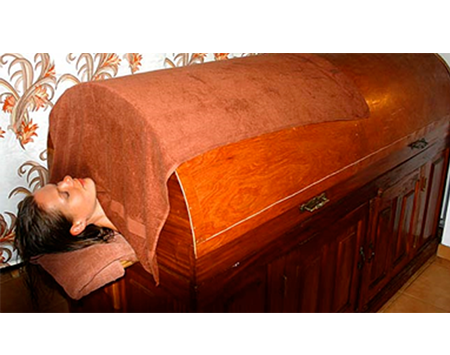
Panchakarma
Vasti
Introduction: Vasti has a great healing capability and is considered to be the half treatment for many diseases. The treatment is primarily used for flushing out loosened doshas from the body via the intestinal tract. In Ayurved, there are several types of Vasti or medicated enemas. Vasti treatment accounts for being the most effective Ayurvedic Panchakarma treatment. It helps in alleviating constipation, distention, chronic fever, sexual disorders, kidney stones, common cold, neck pain, backache, vomiting and acidity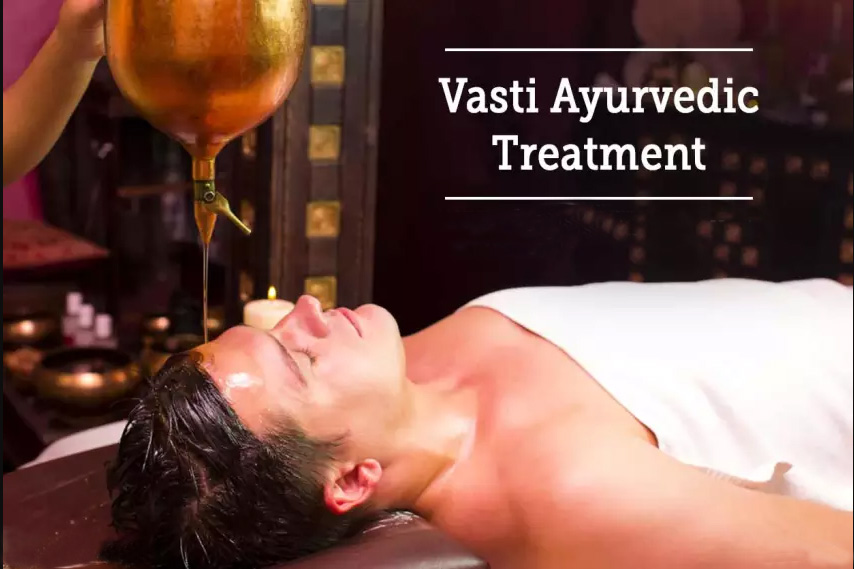

VIRECHAN
Introduction: Virechan is a detox treatment which helps to get rid of toxins in your body. Post virechan you have to take internal medicines as well to treat the problems. Virechan helps faster cure. Virechana is a Sanskrit word that means “laxative” or “purging” and may refer to any substance used to induce purging. Virechana is one of the therapies used in Ayurved, the traditional Indian medical system. More specifically, it is one of the panchakarma toxin-eliminating treatments. Virechana or Virechana Karma is a purification therapy and one among the five scared, healing therapies of the Panchakarma. The Panchakarma encompasses five treatments that can prevent and heal a number of physical, mental and emotional disorders and illnesses.VAMAN
Introduction: This can be explained as medically induced emesis. After proper external and internal snehan (oleation/ Massage) and swedan (sudation/ foementation) of the body, specially prepared decoction of herbs is given to the patient and emesis is induced. This procedure is indicated in the vasant ritu (Spring season) to prevent disease due to kapha dosha in a healthy person. Vaman is highly beneficial to treat the diseases of the respiratory system like rhinitis, Asthma and other diseases like amlapitta, various skin diseases and many more.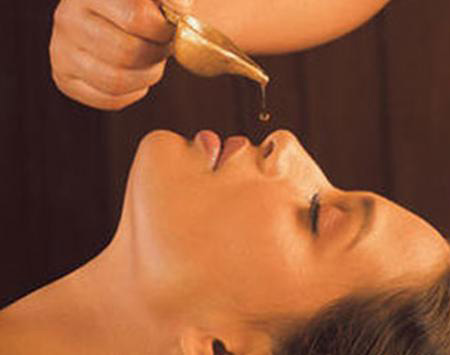
NASYA
Introduction: This means instillation of medicines through the nasal route. The medicines are in the form of medicated oils or medicated ghee. Nasya therapy is primarily used in treating the diseases like sinusitis, rhinitis , hairfall, epilepsy, facial paralysis, Cervical Spondylosis, Migraine and hemiplegia and various other psychological and neurological disorders. Nasya is also known for improving the intellect of an individual. Nasya is an Ayurvedic term, a procedure followed for disorders related to migraine, throat, nose, ear, sinusitis and any other organ above the neck. ... The nasal treatment happens in the form of medicated powders, medicinal fumes, nasal oil or medicated juice.Raktamokshana
Introduction: : Raktamokshana therapy is the blood cleansing and purification therapy. It is a therapeutic cleaning process given by Ayurved. It is one of the essential parts of the Panchkarma healing treatments. It is the prime process of blood detoxification. It is derived from the two words, "Rakt", which means blood and "Mokshana", which means leave. Thus, Rakt mokshana means to let the blood out. The blood is expelled out from the body to reduce the quantity of toxic substances in the blood borne disorders.
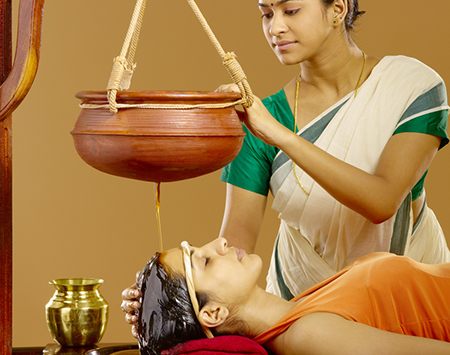
Shirodhara
Introduction: Shirodhara is a form of Ayurved therapy that involves gently pouring liquids over the forehead and can be one of the steps involved in Panchakarma. The name comes from the Sanskrit words shiro (head) and dhara (flow). ... Shirodhara is also effective in treating mental conditions such as anxiety, and mental stress Shirodhara, oil dripping on the forehead in a steady stream or flow, is a widely practiced complementary treatment (upakarma) of Ayurved in both India and the United States. It is usually indicated to treat stress, anxiety, and insomnia and to relax the nervous system.Upakarma
Upakarma is conducted once a year during the shravana or Dhanistha naksatra of the Hindu calendrical month Sravana, when Brahmins ritually change their upanayana thread accompanied by relevant srauta rituals, making sraddha offerings to the rishis, whom Hindus believe composed the Vedic hymns.Janu Basti
Introduction: Thus Janu Vasti means a treatment in which medicated oils are poured and pooled for a fixed duration of time in a compartment or a cabin constructed around the knee joint / joints using wet flour of black gram. Basti is a term used to describe the urinary bladder in Ayurved. Urinary bladder is a bag which holds urine for a certain amount of period till it is voided.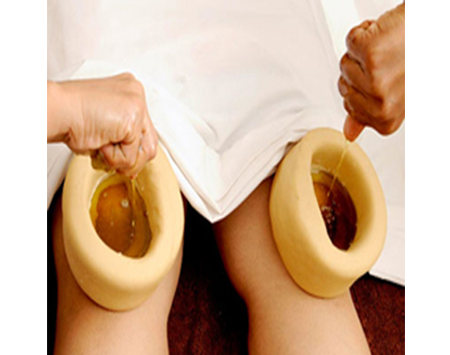
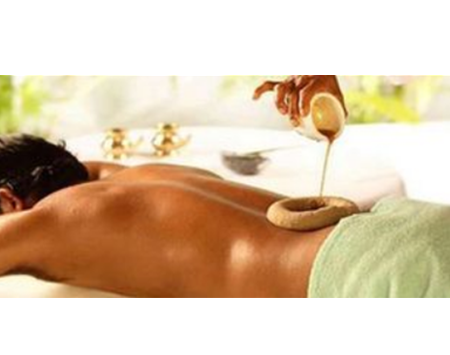
Kati Basti
Introduction: Kati Basti is non-invasive Ayurved therapy for backache. It is also good to keep the spine healthy. Generally, Basti treatment is used to promote elimination of the loosened Vata Dosha. Basti involves introducing medicinal substances such as Hans oils in liquid form on affected parts of the body until oil get absorbed through skin pores & becomes part of the tissue. Since Vata is mainly located in the colon and bones the oil is applied on those parts of the body. In Kati Basti warm Medicated oil is kept on the affected part of the back region for a pre-stipulated time. This stimulates blood flow to the affected area and releases the blocked or vitiated Vata Dosha. This way it, to an extent, helps eliminate the root cause of back painManya Basti
Introduction: Manya Basti Effective Treatment Neck Pain means neck and Basti is the treatment in which the oil is made to be worn. So the treatment in which the oil is made to be worn on the cervical or the neck region is called Manyabasti.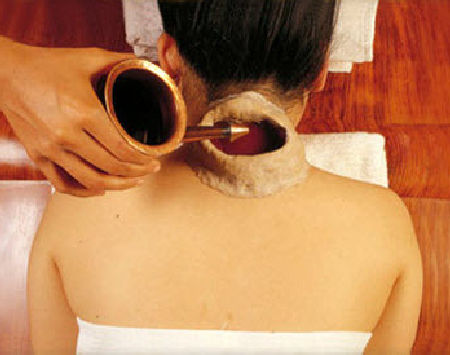
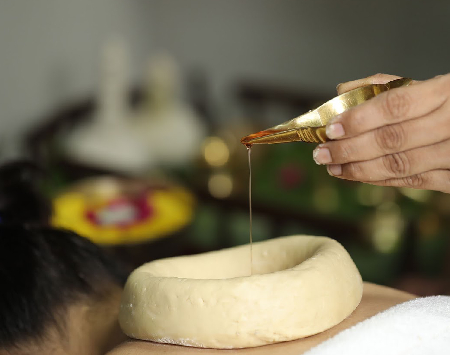
Yog Basti
Introduction: Basti is an important part of Shatkarma (sometimes known as Shatkriya), the yogic system of body cleansing techniques. It is intended mainly to the cleaning of the lower abdomen, especially the colon. Both the Hatha Yoga Pradipika and other sources usually attribute to it many beneficial effects. Sthala basti (aka Sushka basti or Vata basti), cleans the colon by sucking air in the body without the help of any catheter or tube. Jala basti (aka 'Vati basti') cleans the colon by sucking water into the anus. It is allowed the use of a catheter tube.